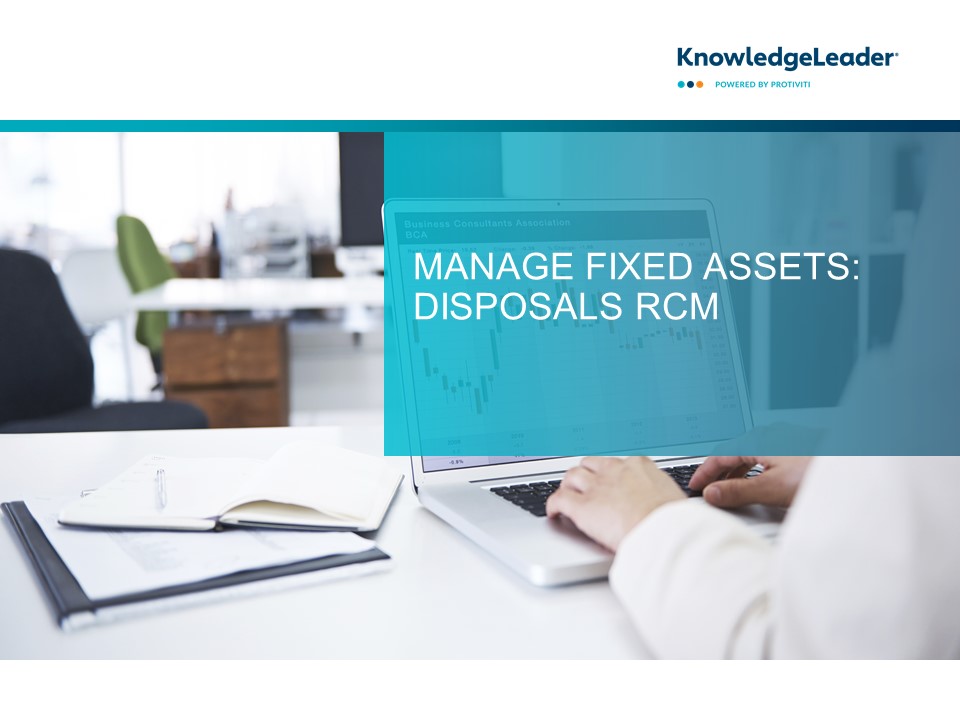Manage Tax Functions: Internal Tax Function RCM

A successful risk management strategy requires a strong internal control environment. The risk control matrix (RCM) format emphasizes that strong and risk-oriented internal control environments are often optimized with automated/manual controls, depending on the situation.
An RCM provides an overview of different control objectives that organizations should take into consideration and the corresponding controls to safeguard the company against risks which may arise if not checked timely. Once customized to an organization, this document can help the user in assessing each control. The control assessment can then also be summarized to develop an action plan.
This document outlines risks and controls common to the “internal tax function” aspect of the 5.4 Manage Tax Functions process in a risk control matrix (RCM) format.
Sample risks include:
- All required income tax payments and refunds may not be made, claimed or recorded, which could result in loss or penalty to the organization.
- Erroneous data may be used in tax computations and result in overpayments or underpayments of taxes.
- Errors in processing, summarization and recording of income tax transactions may go undetected, which could result in misstatement of income tax provisions, liabilities and deferrals.
- Fines or penalties may be charged due to noncompliance with regulatory requirements.
This document can be used as a sample RCM and is not meant to be an exhaustive list of risks and controls. The KnowledgeLeader team will periodically update this RCM with new content. Organizations should select, update and modify the risks and controls included in this document to ensure that it reflects business operations.